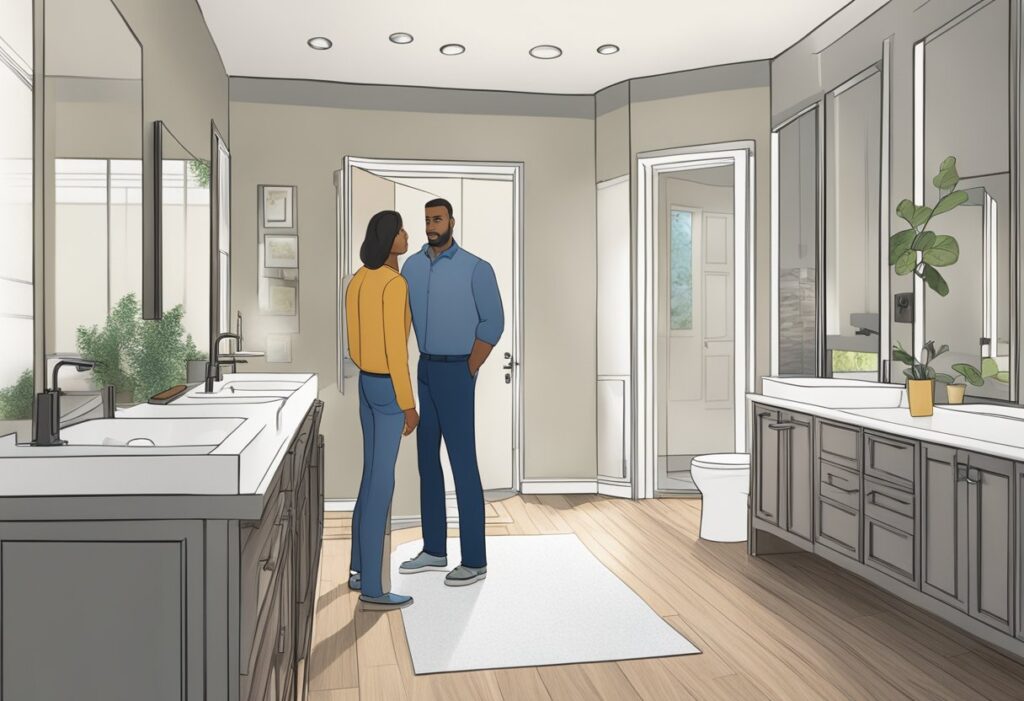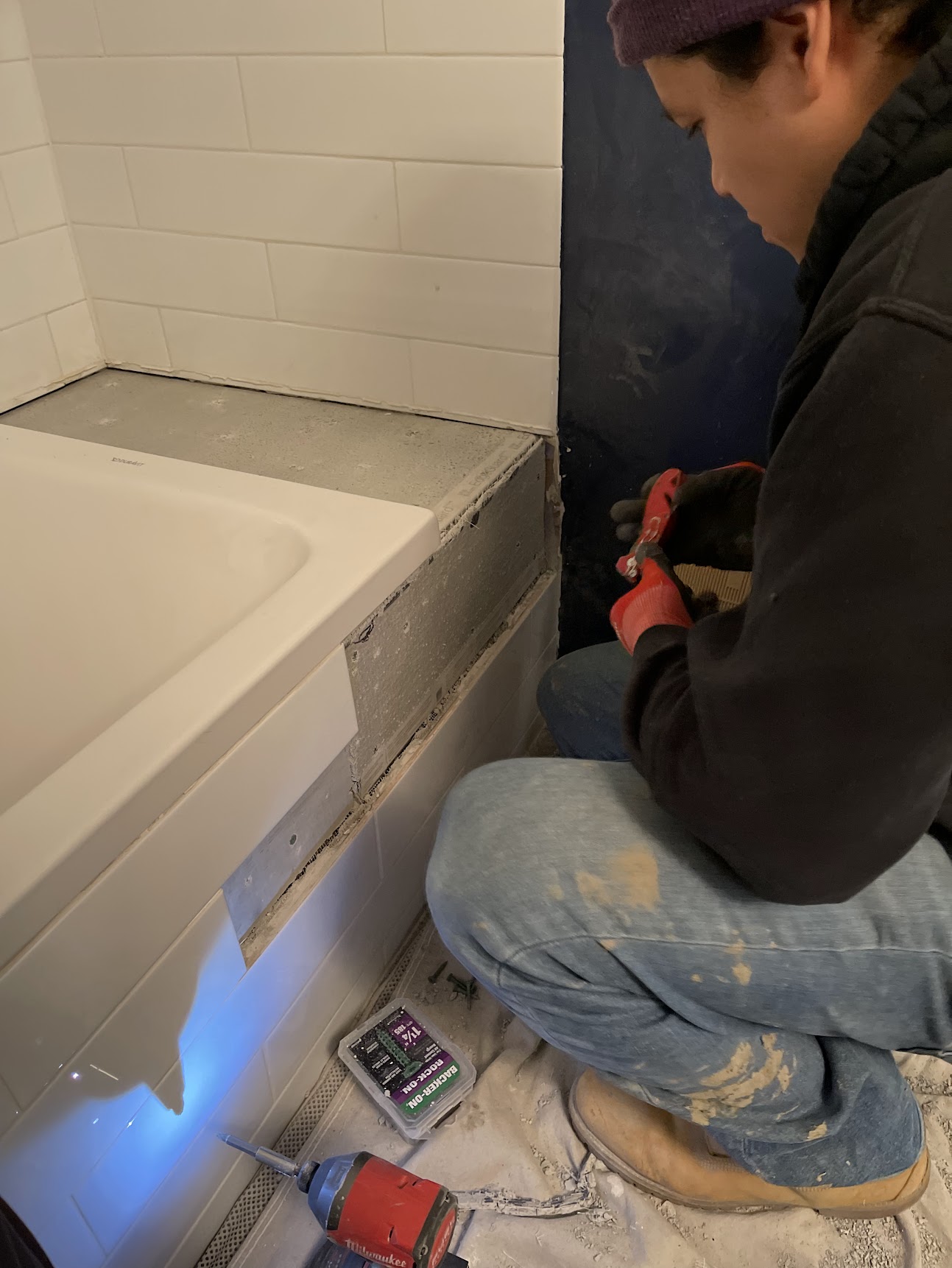Thinking about giving your bathroom a makeover? The cost can add up fast. But don’t worry – there are lots of ways to pay for it without breaking the bank. From personal loans to home equity options, you’ve got choices.
Many homeowners use personal loans or home equity to finance their bathroom remodels. These options let you borrow money based on your credit or home value. You can often get the cash quickly and use it however you want for your project.
Some people also look into special credit cards or lines of credit for home improvements. These can give you flexibility to pay as you go. The key is finding the right fit for your budget and plans. With some research, you’ll be on your way to that fresh new bathroom in no time.

Understanding Bathroom Remodel Financing
Bathroom remodel financing offers several ways to pay for upgrades. Homeowners can choose from different loan types based on their needs and financial situation.
Exploring Secured vs. Unsecured Financing Options
Secured loans use your home as collateral. This means lower interest rates but more risk. Unsecured loans don’t need collateral. They have higher rates but less risk to your home.
Secured options include home equity loans and lines of credit (HELOCs). These tap into your home’s value. Unsecured choices are personal loans or credit cards. They’re based on your credit score.
Home equity loans give you a lump sum. HELOCs let you borrow as needed. Both have competitive rates. Personal loans offer quick approval but higher rates. Credit cards are fast but costly long-term.
Evaluating Home Equity Options
Home equity loans and HELOCs use your house as security. They often have lower rates than other choices. You can borrow up to 85% of your home’s value minus what you owe.
Home equity loans give you all the money at once. You pay it back in fixed amounts. HELOCs work like a credit card. You can borrow and repay as needed during the draw period.
Both options usually have long repayment terms. This can mean lower monthly payments. But remember, you risk losing your home if you can’t repay.
Finding the Right Loan for Your Remodel
The best loan depends on your project, budget, and credit. A personal loan might work for small updates. Larger remodels may need a home equity option.
Compare interest rates and terms from different lenders. Check if there are fees or penalties. Think about how long you’ll need to repay the loan.
Consider your credit score. Better scores mean better rates. If your score is low, work on improving it before applying. Some lenders offer bathroom remodel loans. These are personal loans designed for home projects.
Remember to borrow only what you need. Don’t take on more debt than you can handle. A smart financing choice can make your bathroom dreams come true without breaking the bank.
Planning Your Bathroom Remodel Financing

Getting your bathroom remodel financing right is key. It affects how much you can spend and how long you’ll be paying it off. Let’s look at some important factors to consider.
Credit Considerations and Interest Rates
A person’s credit score plays a big role in bathroom renovation financing. A good credit score can lead to lower interest rates. This means less money paid over time. Someone with a lower score might face higher rates.
Interest rates vary between lenders. It’s smart to shop around. Fixed interest rates stay the same over time. This makes monthly payments predictable. Variable rates can change, which might save money but also adds risk.
Lenders also look at a person’s debt-to-income ratio. This shows how much of their income goes to debt payments each month. A lower ratio can help someone qualify for better loan terms.
Understanding the Impact of Loan Details
Loan details can make a big difference in the long run. Repayment terms affect how long someone will be paying off their loan. Longer terms mean lower monthly payments but more interest paid overall.
Some loans have closing costs. These are fees paid upfront to get the loan. They can add to the total cost of financing a bathroom remodel.
Here’s a simple breakdown of how loan terms can affect costs:
| Loan Term | Monthly Payment | Total Interest Paid |
|---|---|---|
| 5 years | Higher | Lower |
| 10 years | Lower | Higher |
It’s important to find a balance that fits your budget and goals.
Alternative Financing Methods
Several ways exist to finance a bathroom remodel beyond traditional loans. A cash-out refinance lets homeowners borrow against their home’s equity. This can offer lower interest rates than other options.
Credit cards with 0% APR can be useful for smaller projects. They allow interest-free borrowing for a set time. But it’s crucial to pay off the balance before the promotional period ends.
For bigger projects, some might consider an FHA 203(k) loan. This combines the cost of buying or refinancing a home with the cost of renovations. It can be a good choice for fixer-uppers.
Personal loans are another option. They don’t require collateral and can be approved quickly. But they often have higher interest rates than secured loans.









